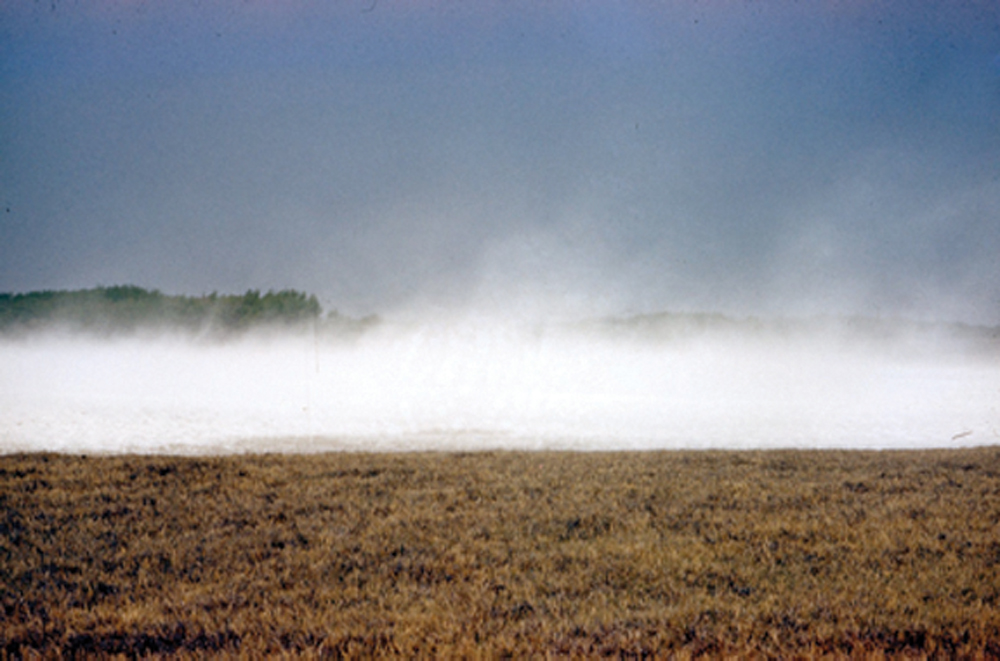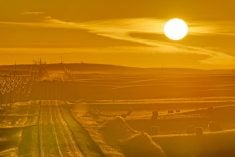In my last column I looked at water entering the ground and the factors that control that flow. This time, I’ll look at water coming out of the ground and the clues it leaves about its origin.
Contact springs
A contact spring occurs when the contact zone between a very sandy soil and a finer textured soil comes to or near surface. The thickness of sand must be sufficient to have a water table form within the sand. That usually means sand dune areas. If the sand is thick enough to form dunes with big winds it is likely thick enough to form a water table.
As the water flows underground from higher to lower elevation it will come out as a spring at the point where the contact between soil types comes near ground surface.
The first measure of water quality is the Total Dissolved Solids — the total minerals (solids) dissolved in the water. TDS can be determined by a detailed lab analysis. But, for many of our waters, a good first approximation of TDS in parts per million can be obtained by measuring the Electrical Conductivity (EC) of the water. EC is easily measured in the field, as shown below.

Units of EC are microSiemens per centimetre (µS/cm), but there’s no need to worry about that. This measurement, µS/cm, is about equal to TDS, in ppm.
In Saskatchewan, the South Saskatchewan River is the standard of comparison and has an EC of about 350 to 500 µS/cm. Sand point wells are about 500 to 1,000 µS/cm. Most farm wells at depths of about 100 to 300 feet have EC of about 1,500 to 3,000 µS/cm.
Contact springs from sand dune areas are usually very good water with few dissolved minerals. The water has passed only through sand so has had no chance to pick up a lot of minerals and be salty and hard. For a complete description of a very pretty little contact spring near Outlook, Sask., owners of Henry’s Handbook of Soil and Water can check out Page 141.
Read Also

Claas brings 1000 Series SP forage harvesters to Canada
In mid-August, Claas unveiled its new line of Jaguar forage harvesters at an event in Visalia, California, deep in the heart of that state’s dairy region.
Contact springs can occur on farm fields as well. If you find yourself stuck on a side hill, it is likely a contact spring.
Artesian springs
Artesian springs occur when pressure from an aquifer is sufficient to force water through the soil and create actual water flow at the soil surface.
Photo 2 (see below) shows an artesian spring I have been watching for many years. It is on the back road to my top quarter and I drive by many times each summer. The salts on the road that can be seen in the picture are there after any significant dry spell. Years ago, water would only flow only after spring snow melt, but now water flows many times a year after any significant rain.
In this case the actual flow does not occur at the lowest point. I suspect that over the centuries, the water found a preferred pathway that has eventually became like a pipe.
Saline soils
Saline soils are often the result of artesian flow that maintains a high water table, even in dry cycles. Capillary rise finishes the job of bringing water to the soil surface where it can evaporate and leave salts behind. Very saline soils can occur from quite good water in an aquifer beneath. It is the concentration by evaporation over the centuries that leaves the soil so salty.

Saline soils are prima facie evidence of groundwater discharge.
In a dry cycle those salts can blow around like snow and cause havoc with power transformers, get sucked in to engines and contaminate the soil they land on.

Ice mounds
Artesian discharge can also result in ice mounds. They show up best in the spring when all the snow is melted. They look just like slow melting snow but if you take a walk you soon find out it is really ice.

Unstable ground
Pressure from an aquifer beneath a site can result in unstable ground and lead to building foundation failure and leaning buildings (see photo at top of page).
In conclusion, when we see weird and wonderful things at the soil surface, the underlying cause may lie deep underground (pun intended).
















